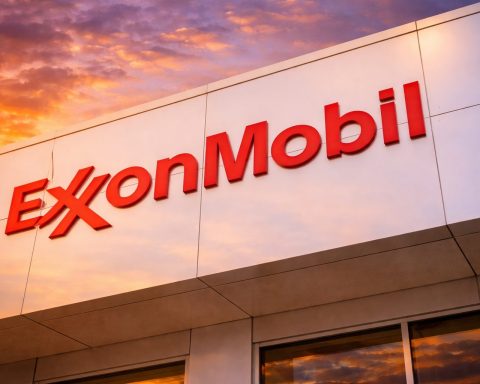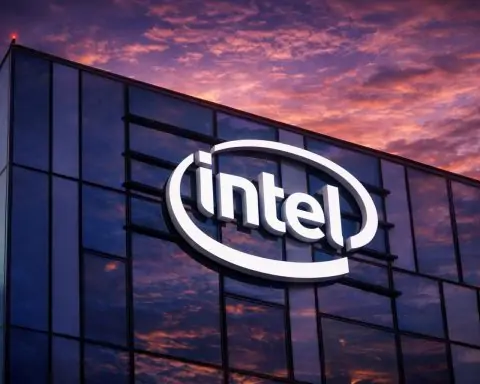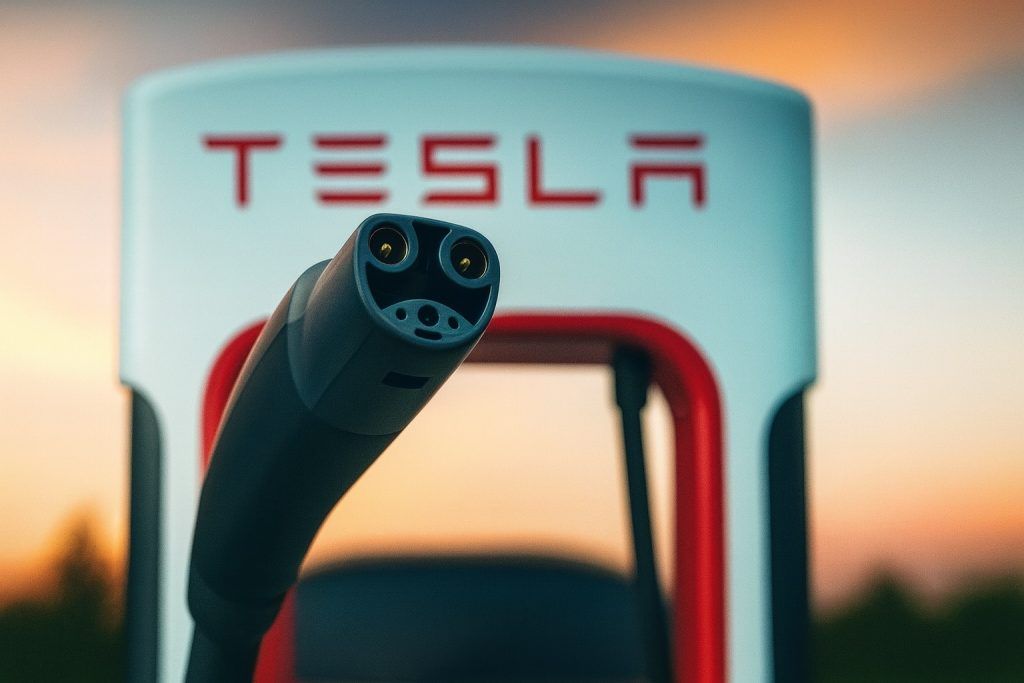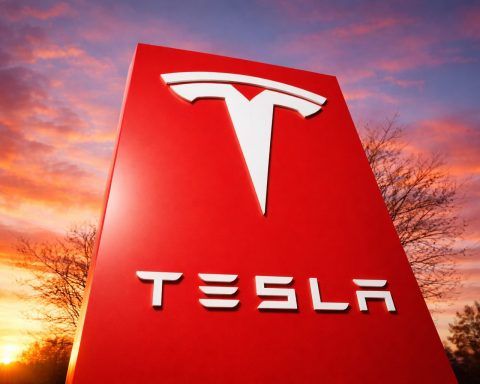- Historic Loss: Porsche AG posted an operating loss of €966 million in Q3 2025, a sharp reversal from a €974 million profit in the same quarter last year – a 96% year-over-year collapse [1]. This is Porsche’s first quarterly loss in modern history, far exceeding analysts’ expected €611 million loss [2], and wipes out nearly all of its year-to-date profit.
- EV Strategy Backfires: The luxury automaker’s plunge into the red is largely due to “extraordinary” costs from a major rollback of its electric vehicle (EV) strategy [3] [4]. Porsche abandoned plans for its own battery factory and delayed new EV models, incurring about €3.1 billion in charges this year [5]. Management admits it “overestimated” how quickly premium buyers would go electric, and is now adding back gasoline and hybrid options to models that were supposed to be EV-only [6] [7].
- Tariffs and China Slump: U.S. import tariffs are dealing a heavy blow – roughly €700 million of profit hit in 2025 [8] – since every Porsche sold in America is imported. Meanwhile, demand in China has faltered: Porsche’s deliveries in China have plunged 26% year-to-date [9] as local EV makers undercut its prices. CFO Jochen Breckner warned that “general market conditions will not improve in the foreseeable future,” citing fierce price wars in China and lingering tariffs [10].
- CFO Outlook – No Quick Rebound: Porsche’s finance chief says 2025 will be the “trough” for earnings, with a modest improvement expected in 2026 [11]. However, Breckner cautioned investors that even in 2026 Porsche won’t return to “double-digit” profit margins – he only foresees a high single-digit operating margin next year [12]. (For context, Porsche’s return on sales was about 14% in 2024.) The company has maintained its guidance for an up-to-2% margin in 2025 [13], and is bracing for a “significantly” lower dividend for 2025 [14].
- Stock Under Pressure: Porsche’s stock – once a star of the 2022 IPO boom – has been pummeled by this year’s bad news. Shares are down over 30% in the past 12 months [15], underperforming peers and even costing Porsche its spot on the blue-chip DAX index in September. Investors initially cheered a recent CEO change and cost-cutting plans (the stock briefly rallied ~4% last week), but the Q3 loss spooked the market. Analysts have slashed forecasts and warn that “the next 6–12 months will be very tough” for Porsche’s valuation [16].
A €966 Million Quarterly Loss as Porsche Reverses Gear
Porsche – famed maker of the 911 sports car – has plunged into crisis after recording an operating loss of €966 million in the third quarter of 2025 [17]. This stunning loss, revealed late Friday, stands in stark contrast to the €974 million profit Porsche notched in the same quarter a year ago [18]. It marks one of the worst financial quarters in the company’s 75-year history. The scale of the collapse surprised even pessimists: analysts had forecast a loss of around €611 million for Q3, but the actual hit was far larger [19].
The dismal results underscore how quickly fortunes have reversed for Porsche. When the company went public in 2022, it was pitched as a profit machine with 15–18% operating margins and a bright electric future [20]. Now, those margins have evaporated – Porsche’s operating return on sales has shriveled to roughly 2% for 2025 [21], barely above break-even for a luxury manufacturer. Through the first nine months of this year, Porsche’s operating profit totals just €40 million [22] (down from nearly €4 billion in the same period of 2024), meaning essentially a 99% collapse in profits year-on-year. Sales revenue has fallen about 6%, with 13,000 fewer cars delivered so far this year [23]. In the words of one industry commentator, Porsche is now facing “one of the biggest crises in Europe’s auto sector,” a dramatic comedown for a brand once seen as nearly invincible [24].
What went so horribly wrong? Porsche’s management points to a combination of self-inflicted strategic U-turns and external economic headwinds. A huge chunk of the loss stems from a sudden about-face in Porsche’s EV strategy that was announced in September. The company had been investing aggressively in electrification – building a battery factory, developing all-electric versions of its SUVs, and aiming for 80% EV sales by 2030. But amid faltering demand, Porsche hit the brakes on those plans. It scrapped its in-house battery production project and shelved a planned flagship electric SUV, incurring hefty write-downs in the process [25] [26]. All told, Porsche says its “strategic realignment” on electrification will cost around €3.1 billion in 2025 – most of it booked in this disastrous Q3 [27]. These are essentially the costs of admitting its previous EV roadmap was too ambitious and pivoting back to a more gradual approach.
Compounding those strategy costs are trade and market challenges abroad. The United States’ 15% import tariff on European cars has slammed Porsche’s finances [28]. Because Porsche builds all its cars in Europe (with no U.S. factory), every vehicle it sells in America gets hit with these steep tariffs. Breckner, the CFO, revealed that U.S. tariffs will erode about €700 million from Porsche’s profits this year [29]. “Tariff-related costs” had already exceeded €500 million by the end of Q3 [30] [31]. In response, Porsche plans to hike its U.S. prices in coming months to pass some of the cost onto consumers [32], and it is even exploring building a U.S. assembly plant in the longer term to bypass tariffs entirely [33]. But any American factory would take years and billions of euros to establish [34], so for now the tariff pain persists.
Meanwhile in China – Porsche’s largest market until recently – demand has slumped dramatically. Chinese consumers have begun favoring high-tech electric cars from domestic brands like BYD, which often cost far less than a Porsche [35]. Porsche’s sales in China dropped about 26% in the first nine months of 2025 [36], a stunning reversal for a market that had long delivered outsized growth and profits. “We have to assume that the general market conditions will not improve in the foreseeable future,” CFO Breckner said bluntly regarding China [37]. A fierce EV price war there – kicked off by domestic automakers and Tesla – has left even prestigious marques like Porsche with weaker bargaining power. The automaker has responded by offering discounts in China and rethinking its product mix, but it expects the sales decline to continue into 2026 [38].
Electric Dreams Deferred: Porsche’s Costly Strategy U-Turn
Porsche’s predicament is largely self-induced by an overzealous EV expansion that didn’t go as planned. In years past, Porsche was an EV evangelist among luxury brands – rolling out the Taycan sports sedan, planning electric versions of the Macan and 718, and touting lofty electrification targets. But reality hit hard in 2025. EV uptake, especially for high-end models, proved slower than Porsche anticipated. The company found itself pouring money into EV projects and battery R&D without seeing commensurate sales. The Taycan’s sales fell 6% in the first half of 2025 [39], and it became clear that customers weren’t willing to pay a big premium for Porsche’s electric offerings when competitors (and government policies) were driving prices down.
In a dramatic pivot, Porsche’s board decided to reverse course on key elements of its EV strategy. It canceled the joint venture with battery maker Varta (its “Cellforce” battery project) and wrote off those investments [40]. It postponed the launch of the all-electric Macan SUV yet again, and it even re-introduced internal combustion engine (ICE) and plug-in hybrid versions for upcoming models that were supposed to be EV-only [41] [42]. For example, an all-electric ultra-luxury SUV (codenamed “K1”) that was in the works will now come with gasoline and hybrid options instead [43]. Porsche also dialed back its EV sales goal – originally 80% of sales by 2030 – to a “customer-driven” mix (essentially admitting the 80% target was unrealistic) [44].
These moves, while perhaps necessary, carried heavy one-time costs. Retooling factories, halting projects, and writing down investments led to that €3.1 billion charge for 2025 [45]. The immediate financial hit is painful (turning a solid profit into a big loss), but Porsche’s leadership argues it’s taking “bitter medicine” now to avoid even greater losses later. “This year’s results reflect the impact of our strategic realignment,” CFO Breckner said, adding that “we are consciously accepting temporarily weaker financial figures” in order to strengthen Porsche long-term [46]. He characterized the EV pullback as a course-correction – essentially acknowledging that Porsche’s “premium EV playbook” didn’t work as expected [47]. As one auto analyst put it, Porsche’s EV strategy has been “stress-tested” by reality: high development costs, plus tariffs and a softer luxury market, have “pinched margins” to the breaking point [48].
Analysts generally agree that Porsche had little choice but to rethink its EV approach, given market conditions. “Porsche’s heavy EV investment hasn’t yielded a Tesla-beater yet,” noted analysts at Bernstein Research, emphasizing that “it will take time and money to reset the product program to provide the flexibility… customers are demanding.” [49] In other words, Porsche needs to offer a mix of EV, hybrid, and ICE models for longer than planned – and that transition will be expensive. A trader quoted by Reuters bluntly said the company had been “too dependent on EVs”, and that reversing that mistake will take time [50]. The broader industry lesson, some experts say, is humbling: if even Porsche – with its world-class engineering and strong brand – can’t quickly make luxury EVs profitable, it bodes ill for other automakers rushing into the EV market [51].
“Trough Year” 2025: Porsche Braces for Lean Times
Facing this confluence of setbacks, Porsche’s management is trying to reassure stakeholders that the worst will be contained to this year. “We expect 2025 to be the trough that precedes a noticeable improvement from 2026 onwards,” CFO Jochen Breckner told investors on the earnings call [52]. According to Breckner, 2025 represents a low point in profitability – a year of painful adjustment – after which Porsche’s earnings should start climbing again (albeit gradually).
The company is notably sticking to its official 2025 guidance, albeit a much-downgraded one. Porsche still expects to achieve up to a 2% return on sales for full-year 2025, down from 14% in 2024 [53]. In other words, Porsche hopes to at least break even or earn a thin profit margin for the full year despite the Q3 bloodbath. Achieving even that will depend on a decent fourth quarter and no further negative surprises. The automaker’s revenue forecast for 2025 was already trimmed in April (to about €37–38 billion, from ~€39–40b previously) [54], reflecting weaker sales expectations.
For 2026, Porsche management initially hoped for a strong rebound – but they are now tempering those expectations. Breckner made it clear that double-digit operating margins won’t return in 2026 [55]. “We do not expect, at the return on sales level, a performance in the double digits in 2026,” he said, implying that even next year the margin will likely stay under 10% [56]. He did suggest that a “high single-digit” margin is possible in 2026 [57] if things go well. In practical terms, that means perhaps an 7–9% margin, which is a far cry from the 15–17% that Porsche had been targeting for the mid-term prior to this crisis [58]. Achieving double-digit margins is now only a goal “for the years after 2026,” Breckner noted [59]. This reset of mid-term ambition underscores that Porsche’s profitability profile has fundamentally changed – at least for the next few years – due to higher costs and the need to rebuild its sales momentum.
To navigate the trough, Porsche is aggressively looking to cut costs and protect cash flow. The company had already announced plans to eliminate 1,900 jobs over the next few years (primarily through attrition and buyouts) [60] [61], and to let go about 2,000 temporary contractors this year [62]. Now, Breckner says a “second package” of restructuring measures is under negotiation with labor unions, expected by year-end [63] [64]. While he didn’t detail all the measures, the CFO indicated they are targeting “significant” cost reductions focused on salary levels and perks rather than more mass layoffs [65]. In his words, Porsche is exploring “large-scale solutions” in these talks [66] – hinting at wage freezes or benefit cuts for its German workforce as alternative ways to trim expenses without sparking a major labor clash. Porsche’s powerful works council will have a say, but the urgency is clear: the company must slim down and become more efficient to weather this storm.
Another lever is scaling back investments and shareholder payouts temporarily. Porsche confirmed it will propose a much lower dividend for 2025 versus last year’s €2.31 per share [67]. Cutting the dividend will conserve capital at the expense of disappointing investors (many of whom bought Porsche stock for its promised combination of growth and rich payouts). On the R&D side, Porsche is prioritizing critical projects and delaying nice-to-have expenditures. Even so, it will continue to spend heavily on electrification – just in a more focused way – as well as on the development of next-gen combustion engines and hybrids to keep its lineup attractive.
Breckner struck a cautiously optimistic tone that after 2025, things should improve. He believes the massive one-time charges of this year won’t repeat, and that Porsche’s earnings will “noticeably” bounce back in 2026 [68]. By then, some benefits of the restructuring (like lower fixed costs) should kick in, and new products – including revamped EVs and hybrids – will start contributing. However, not everyone is convinced the turnaround will be so quick. Some analysts note that many of Porsche’s headwinds are external and persistent: “Tariffs aren’t disappearing, Chinese competition is intensifying, and the global EV market has shifted to price warfare,” one industry observer commented, warning that Breckner’s rosy 2026 outlook might be “corporate optimism” more than reality [69].
Investor Jitters: Stock Slumps and Forecasts Cut
For Porsche shareholders, 2025 has been a roller coaster – mostly downhill. The company’s Frankfurt-listed stock (trading under the symbol P911) has lost roughly 25% of its value year-to-date [70] and more than one-third in the past 12 months [71]. In fact, the slide was so severe that in September Porsche was booted off the DAX, Germany’s premier stock index, after less than a year on it [72] [73]. Being relegated to the mid-cap index was a reputational blow that highlighted just how far the company’s market capitalization had fallen. (Porsche’s free float of shares is relatively low due to Volkswagen’s majority ownership, which also contributed to the DAX exit [74]. But the steep share price decline was the main factor.)
Investors have been digesting a string of bad news: multiple profit warnings, the EV strategy reversal, and now the first-ever quarterly loss. Each time, Porsche’s stock took a hit. For example, when Porsche slashed its 2025 margin outlook to ~2% in late September, the stock plunged about 7% in a day [75]. By mid-October, shares hit a 52-week low around €39.6 [76], down from highs above €70 earlier in the year [77]. In a bid to restore confidence, Porsche’s board announced a major leadership change on October 17: long-time CEO Oliver Blume will step down from the Porsche CEO role at the end of 2025 (he remains CEO of parent VW), and Michael Leiters – a respected industry veteran – will take over as Porsche CEO in January 2026 [78]. This news provided a brief relief rally for the stock. Porsche shares jumped ~4% in the days around the CEO announcement [79], as investors saw it as a sign that fresh leadership and focus would be applied to the troubled carmaker. A top investor at DWS Group praised the move, saying Porsche’s supervisory board had “finally listened” to repeated criticism about governance [80]. However, he also cautioned that “even with new leadership, the old challenges must be tackled – namely the EV strategy and China sales” [81].
The third-quarter earnings shock has largely erased that brief stock rally. Porsche’s shares slid again after the €1B loss was revealed (in after-hours trading on Friday). The stock closed around €47 on Friday [82] – actually up about 3.6% for the day, since the results were announced after market close – but it is poised to fall once markets react to the bad news. Analysts at Jefferies dourly noted that “frequent profit cuts may continue to weigh on the stock”, and that investors are in “wait-and-see mode” until Porsche proves it can hit its reset targets. Several brokerages trimmed their 12-month price targets for Porsche following the Q3 release, with most now clustered in the mid-€40s (around €43–€45) [83] [84]. That implies little upside from current levels. The consensus rating on the stock has drifted to “hold/neutral”, as roughly an equal number of analysts have buy, hold, or sell recommendations [85].
In short, market confidence in Porsche has been badly shaken. “Porsche’s business model is being stress-tested,” says Jens Meyer, an auto analyst at HSBC, noting that high R&D spending on EVs, combined with tariffs and a softer luxury market, have “pinched margins” [86]. Meyer believes the iconic sports-car maker still has a strong brand and loyal customers, but he warns that “the next 6–12 months will be very tough” for Porsche’s stock as the company navigates this transition [87]. Another analyst, Marie Koller of Citibank, commented that Porsche’s abrupt strategy change – such as dropping its planned battery factory – was probably wise given weak EV demand, “but the sudden shift shook investor confidence” [88]. Many in the market are taking a “show me” attitude: they want to see evidence that Porsche can stabilize its earnings and execute a successful turnaround plan before they jump back in. Until then, the stock may well trade “sideways in the low €40s”, according to market strategists, barring any big positive catalyst [89].
New CEO at the Wheel: Can Michael Leiters Steer a Turnaround?
From January 2026, Porsche will have new leadership to confront its myriad challenges. The company’s supervisory board tapped Michael Leiters – a seasoned executive with stints at Ferrari and McLaren – to be the next CEO of Porsche AG [90]. Leiters is no stranger to Porsche: he actually began his career there and spent 13 years in the ranks (2000–2013) working on SUV projects like the Cayenne and Macan [91]. He later became Chief Technology Officer at Ferrari and then CEO of McLaren Automotive, earning a reputation for product development savvy. Porsche’s hope is that Leiters can combine technical expertise with fresh perspective, and dedicate 100% of his attention to Porsche’s issues – something outgoing CEO Oliver Blume, who was juggling the dual role as Volkswagen Group CEO, arguably could not do.
Leiters will indeed inherit “a poisoned chalice,” as one automotive analyst told Les Echos: a storied luxury brand in crisis, with collapsing margins, mounting losses, and intense pressure from both Chinese EV rivals and the U.S. tariff regime [92]. His mandate will be to execute the turnaround plans already in motion – cost cuts, product strategy adjustments – and to restore faith in Porsche’s long-term vision. High on his to-do list will be accelerating the “Push to Pass” efficiency program (the internal code name for Porsche’s cost-cutting drive [93]), negotiating the next phase of job cuts or labor concessions in a way that doesn’t damage morale, and revitalizing Porsche’s product lineup to make it both profitable and exciting for customers. That includes delivering on the revised strategy: launch the new EVs on a more realistic timeline, keep popular gas models like the 911 and Cayenne fresh, and leverage Porsche’s engineering talent to stand out in an increasingly tech-driven auto market.
One immediate move under the new regime will be addressing investor relations. With Porsche’s stock in the doldrums, Leiters and CFO Breckner will need to articulate a credible path back to growth. Insiders say Porsche’s controlling shareholders (the Porsche-Piëch family, who own the majority via Porsche SE holding company) are fully backing the reset and will be patient – but they too expect results in the coming years. In an interview with a German newspaper, outgoing CEO Blume insisted that “with Porsche’s new strategy, we have the clear ambition to return to the DAX as soon as possible.” [94] [95] In other words, management aims to get Porsche back into the elite index by boosting its market cap again. To do that, they’ll have to convince the market that Porsche can sustainably earn double-digit margins and growth, just as it did in the pre-IPO glory days.
Despite the grim current headlines, Porsche loyalists point to strengths that could aid a comeback. The company still has one of the strongest luxury brands in the world and a track record of engineering excellence. Even amid its financial woes, Porsche has continued to innovate: it recently unveiled the limited-run 2025 Porsche 911 S/T, a model that reviewers called perhaps “the best 911 ever” for its purist driving experience [96]. And Porsche confirmed that its next-generation electric 2026 Cayenne SUV will debut cutting-edge features like wireless inductive charging pads [97] – showcasing that its R&D pipeline remains robust. These product highlights indicate Porsche is not losing its penchant for innovation, which could bolster long-term investor confidence.
For now, though, Porsche’s reality is a sobering one: 2025 is a year of reckoning. The company’s bold electrification gamble met with harsh market truth, and reversing course has been extremely costly. A combination of economic headwinds and strategic missteps has driven an iconic automaker into the red. As Porsche works to regroup, industry observers say this saga is also a warning for others. If a marque like Porsche struggles to profit from the luxury EV revolution, what lies ahead for peers like Mercedes-Benz, BMW, or Audi? [98] A broader reckoning may be underway in the auto sector, as legacy carmakers grapple with how to go electric without “losing the most money fastest” [99].
Porsche’s management is adamant that it can right the ship. The next few quarters will be crucial to prove that 2025 truly is just a “trough” and not a permanent collapse in fortunes. “We are strengthening Porsche’s resilience for the long term,” CFO Breckner insisted [100], expressing confidence that the iconic sports car maker will regain its stride. For the public and investors alike, the message is: Porsche is down, but not out. The road to recovery may be long and fraught with challenges, but given Porsche’s storied history of overcoming near-death experiences (remember the brink of bankruptcy in the early 1990s, or the failed VW takeover in 2008), few are ready to count it out just yet. As one market watcher put it, Porsche’s prestige and brand appeal remain unique advantages – if it can navigate the current minefield of tariffs, tech transitions, and global competition, the company could eventually emerge leaner and stronger. But until then, Porsche’s fall from grace serves as a cautionary tale of how even the mightiest automakers are not immune to disruption and strategic folly [101] [102].
Sources: Le Figaro/AFP, Les Echos, Reuters; ts² TechStock (Marcin Frąckiewicz) analysis [103] [104]; Boursorama/Reuters [105] [106]; EVXL automotive report [107] [108]; Road & Track [109]; and official Porsche investor communications.
References
1. ts2.tech, 2. ts2.tech, 3. evxl.co, 4. ts2.tech, 5. ts2.tech, 6. evxl.co, 7. evxl.co, 8. ts2.tech, 9. evxl.co, 10. evxl.co, 11. www.boursorama.com, 12. www.boursorama.com, 13. www.boursorama.com, 14. www.boursorama.com, 15. www.reuters.com, 16. ts2.tech, 17. ts2.tech, 18. ts2.tech, 19. ts2.tech, 20. evxl.co, 21. evxl.co, 22. evxl.co, 23. www.roadandtrack.com, 24. ts2.tech, 25. evxl.co, 26. evxl.co, 27. ts2.tech, 28. ts2.tech, 29. ts2.tech, 30. auto.economictimes.indiatimes.com, 31. auto.economictimes.indiatimes.com, 32. www.reuters.com, 33. evxl.co, 34. evxl.co, 35. evxl.co, 36. evxl.co, 37. evxl.co, 38. www.reuters.com, 39. evxl.co, 40. evxl.co, 41. evxl.co, 42. evxl.co, 43. evxl.co, 44. evxl.co, 45. ts2.tech, 46. www.roadandtrack.com, 47. evxl.co, 48. ts2.tech, 49. ts2.tech, 50. ts2.tech, 51. evxl.co, 52. www.boursorama.com, 53. www.boursorama.com, 54. ts2.tech, 55. www.boursorama.com, 56. www.boursorama.com, 57. www.boursorama.com, 58. www.asphalte.ch, 59. www.boursorama.com, 60. ts2.tech, 61. www.reuters.com, 62. ts2.tech, 63. www.reuters.com, 64. www.reuters.com, 65. www.reuters.com, 66. www.boursorama.com, 67. www.boursorama.com, 68. www.boursorama.com, 69. evxl.co, 70. ts2.tech, 71. www.reuters.com, 72. www.reuters.com, 73. www.reuters.com, 74. www.reuters.com, 75. ts2.tech, 76. ts2.tech, 77. ts2.tech, 78. ts2.tech, 79. ts2.tech, 80. ts2.tech, 81. ts2.tech, 82. ts2.tech, 83. ts2.tech, 84. ts2.tech, 85. ts2.tech, 86. ts2.tech, 87. ts2.tech, 88. ts2.tech, 89. ts2.tech, 90. ts2.tech, 91. evxl.co, 92. evxl.co, 93. evxl.co, 94. www.reuters.com, 95. www.reuters.com, 96. ts2.tech, 97. ts2.tech, 98. evxl.co, 99. evxl.co, 100. www.roadandtrack.com, 101. ts2.tech, 102. evxl.co, 103. ts2.tech, 104. ts2.tech, 105. www.boursorama.com, 106. www.boursorama.com, 107. evxl.co, 108. evxl.co, 109. www.roadandtrack.com










